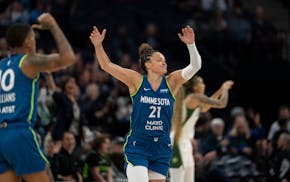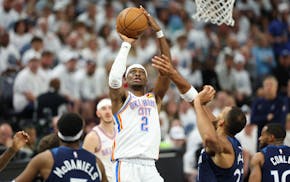The Vikings went 14-3 last season with extremely limited help from anyone drafted during the first three years of the Kwesi Adofo-Mensah and Kevin O'Connell era.
Jordan Addison, in fact, was the only starter on the field for the Week 18 showdown against Detroit who was taken in a draft between 2022 and 2024.
Some of that is a reflection of how poorly Adofo-Mensah's first draft went in 2022. Some of that is a reflection of key injuries to players like Mekhi Blackmon and J.J. McCarthy. Some of that is a reflection of just how well the Vikings' veterans, including a great free-agent class, performed last year.
And some of it — the thing we tend to forget at times — is that it just takes time for players to develop.
The Vikings have much bigger plans in the 2025 season for Blackmon, McCarthy and 2024 first-rounder Dallas Turner. All three could make major impacts on inexpensive contracts, the gold standard in the modern NFL.
But the uncertainty surrounding how much production the Vikings will get from young players in 2025 sent the team again into spending mode in this year's free agency.
The Vikings did well in that space again, but two things can be true at the same time: The free agency success is admirable, but it is not a sustainable model indefinitely.
And that's where the 2025 draft, which starts Thursday in Green Bay, comes into play.
As I discussed with Minnesota Star Tribune Vikings writer Emily Leiker on Wednesday's "Daily Delivery" podcast, the Vikings have limited picks and limited needs this year. But that doesn't mean the draft isn't important.
"We feel like we have a roster where we can truly be selective on who we're going to pick," O'Connell said this week.
That's true, but O'Connell also recognizes that the players the Vikings select this year (and presumably next year as well) are vital to the franchise's continued success.
The Vikings' salary cap table is more of a fluid document than an inflexible map, but it is still instructive to look at their 2026 situation and see that they currently have $311 million committed to their top 51 players — about $60 million more than the same commitments for 2025.
Contracts have been structured and backloaded in ways to allow the Vikings to compete in 2025, which makes sense. But that also makes it imperative that they don't have to keep going on spending sprees to fill out roster spots.
So even though the Vikings have just four picks this season — No. 24 overall in the first round plus picks in the third, fifth and sixth rounds — they need to make the most of them. Understanding that their future depth might be more important than their immediate needs, a trade down from No. 24 would make a lot of sense.
In short: They've been able to mask their draft shortcomings with free agency home runs. But that's an expensive way to operate, akin to buying too many things with a credit card instead of cash.

Lynx beat Storm to remain undefeated
Twins beat Rays 4-2 behind strong start from Joe Ryan

Bader briefly sidelined from Twins' lineup after injury from broken bat

Reusse: Bring on the boos, but Gilgeous-Alexander is a deserving MVP
